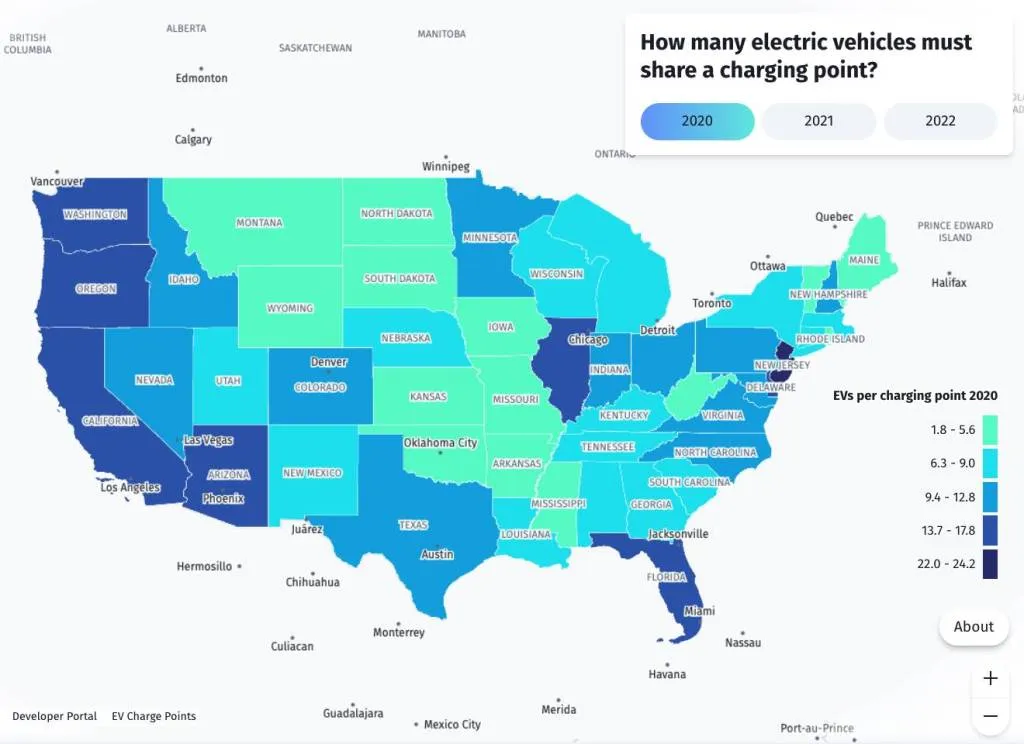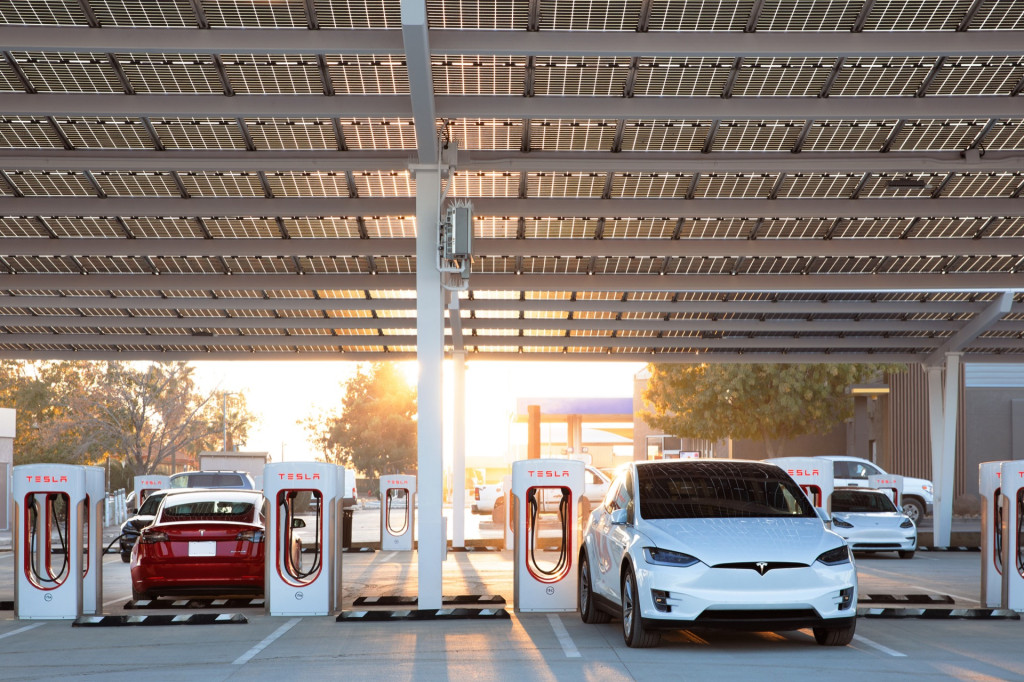Which states are doing the best in terms of providing the right number of public chargers—and the right type of public chargers—for the growing fleet of electric vehicles?
The answer might not be as simple as one metric, suggests a study looking to assess the state of EV demand and infrastructure readiness. But it does attempt to combine factors to see which states—and which countries—are or aren't preparing well for the rising tide of EVs.
The study, from the location-data company HERE Technologies and the research firm SBD Automotive, for World EV day (Sept. 9), mapped out how each country in Europe, and each state in the U.S., is doing, in terms of public charge points per road length, average EV charger power, 2022 EV market share, and the size of the EV fleet relative to the number of charge points.
After looking at those factors, it noted that the U.S. as a whole should have one public charger for every eight to nine EVs.

HERE EV Index rankings for US states
On a state-by-state basis, top EV leaders included Connecticut, Vermont, Massachusetts, Maryland, Maine, New York, Colorado, Rhode Island, and California. EV laggards, by this composite measure, included Alaska, Arkansas, Idaho, Tennessee, Nebraska, Texas, Kentucky, Louisiana, Indiana, and Wisconsin.
Results below, for instance, highlighted that across most U.S. states there’s a much larger fleet of registered EVs relative to public chargers, just looking at 2022 versus 2020.

EV chargers per registered EV, by US state, 2020

EV chargers per registered EV, by US state, 2022
Many of the bottom-performing states were those also singled out this past week by a J.D. Power study pointing out how EV adoption is becoming more polarized by state. It explained that’s because of how states have essentially divided into “two camps,” with some promoting EV adoption with incentives and infrastructure while others haven’t.
The study applied the same methodology to European countries, and found Norway, Netherlands, Luxembourg, Germany, and Switzerland at the top, with Cyprus, Malta, Greeze, Lithuania, and Poland at the bottom. The U.K., widely perceived as aspiring for wider EV adoption, was on the list of underperformers.
California is an exceptional case among U.S. states, as it’s where EV adoption has been the strongest. There, EV sales have cracked 15% of the market, and one of four new vehicles has a charge port. In 2022, California offered more than 46,000 chargers for almost a million registered EVs. That ranks it among the bottom states by EVs per charger—but it excels in the other measures.

Tesla Supercharger
Authors point out that in a nascent EV market, like the U.S., it’s more important to follow the number of registered EVs per public charger, whereas in mature EV markets like Europe—or, some might say, California—following the charger power per EVs is more useful.
The study used HERE’s charging station API, which provides data on connector types, hours, and location for charging stations, in addition to charging power.
As it noted for the U.S., while there’s a massive federal EV charging-infrastructure buildout underway, that wasn’t yet represented at the start of the year. So next year by this time, the data may indeed show that some states are making up for lost time.













